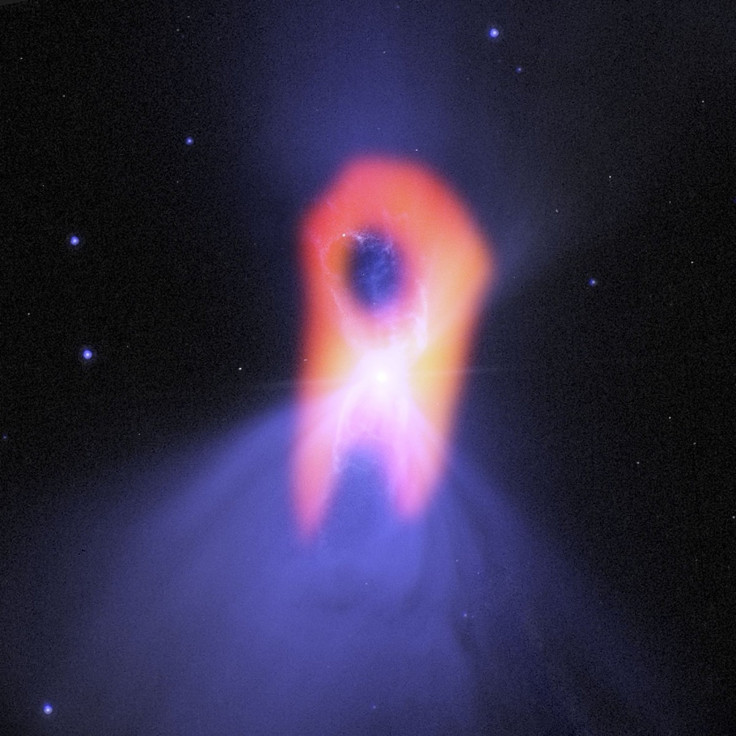New Shape Of Frigid Boomerang Nebula Revealed By ALMA Telescope

A young planetary nebula that has intrigued astronomers for a decade may be home to some cosmic illusions, according to new observations.
Located around 5,000 light-years away in the constellation Centaurus, the cosmic object is a chilling 1 degree Kelvin -- or minus 458 degrees Fahrenheit, details a National Radio Astronomy Observatory (NRAO) press release. This places the planetary nebula at a temperature colder than the afterglow that was left from the Big Bang -- space’s natural background temperature. Named the Boomerang Nebula, the star once resembled our own sun. But as its life is coming to an end, it has shed off its outer layers. White dwarf stars in the center of the object release extreme ultraviolet radiation, forcing the gas in the nebula to give off brilliant colors of light.
The object was first spotted by ground-based telescopes, which made it appear lopsided, reports the National Monitor. Then, using data from NASA’s Hubble Space Telescope in 2003, researchers attributed a bow-tie-like shape to the object. Recently, astronomers have gained a fresh view of the Boomerang Nebula using the Atacama Large Millimeter/submillimeter Array (ALMA) telescope in Chile. The ALMA data reveals that the previous Hubble photo only shows part of the object’s history. Astronomers also believe that the twin lobes present in the photo may be the result of a trick of light caused by the light as it's viewed at visible wavelengths.

“This ultra-cold object is extremely intriguing and we’re learning much more about its true nature with ALMA,” said Raghvendra Sahai in the NRAO statement -- a lead author of the paper and a researcher and principal scientists at NASA’s Jet Propulsion Laboratory. "What seemed like a double lobe, or ‘boomerang’ shape, from Earth-based optical telescopes, is actually a much broader structure that is expanding rapidly into space."
Normally, white dwarf stars in the center of the planetary nebulae release extreme ultraviolet radiation, forcing gas in the nebula to give off brilliant colors of light. But according to the new release, the Boomerang Nebula is a pre-planetary nebula, consisting of a central star that has gotten hot enough to give off the glowing colors caused by the ultraviolet radiation. As a result, the Boomerang Nebula is identified by starlight that reflects off of its dust grains.
“The outflow of gas from this particular star is expanding rapidly and cooling itself in the process. This is similar in principle to the way refrigerators use expanding gas to produce cold temperatures,” said the NRAO press release. Beyond understanding the more complex shape of the object, scientists say the new research will play a vital role in “the understanding of how stars die and become planetary nebulae” since it “shed new light on the death throes of a Sun-like star.”
© Copyright IBTimes 2025. All rights reserved.




















